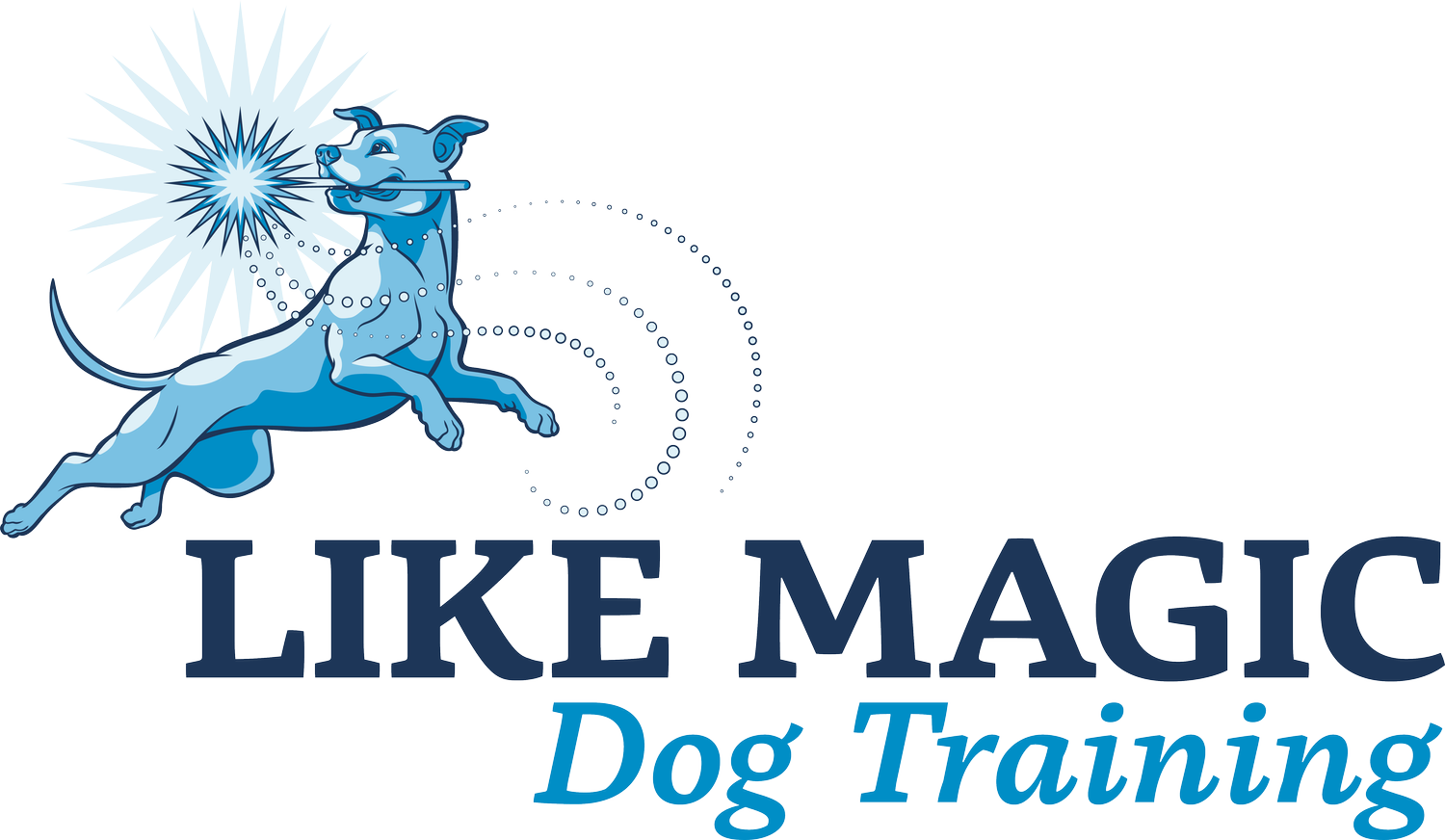What's in a Walk?
I frequently talk to clients about dog’s energy needs, and how a walk around the block probably isn’t going to fulfill the physical energy needs for most dogs. We have two legs and our dogs have four - the exercise math simply doesn’t hold up for the majority of adolescent and adult dogs. That doesn’t mean, though, that walks don’t have value, and that we shouldn’t look to have pleasant, satisfying walks around the neighborhood with our dogs. Walks are wonderful outlets for mental energy - allowing your dog the opportunity to sniff around for the news, and to work with you in their training with the variety of environments and distractions your average neighborhood can offer your pet.
Once your dog can maintain focus on you for a good 30 minute walk though, and the walk itself isn’t about training loose leash walking - what do you do? What does an on-walk training session look like and how can you incorporate it into your daily routine? I offer training walks as one of my regular services, and I honestly believe that every dog should have regular training walks for their enrichment and continued reinforcement of desired behaviors. A training walk is a neighborhood walk where your dog is working to enhance their skills. That might mean polite leash manners, it may mean reactivity management, it may mean impulse control and relaxation. The specific makeup of the skills on the walk might differ from dog to dog, but my goal is that a dog on a training walk is working and actively engaged with me from the first to last step.
Fitting this around the natural distractions of the neighborhood is easy once you get creative about it - working attention after a dog has had a thorough sniff of the cable box, asking for a wait at every curb. Working recalls when the dog is distracted and gets well ahead or behind you. Tossing treats and then asking the dog to wait to retrieve them - or even teaching an implied pause until they are released after the treat. Can your dog hold a wait as a person passes by on the opposite side of the street? What about the same side?
This is a lot of mental energy for your dog to expend ,and it’s important to go at their pace. Some dogs love to walk and happily buy into engagement and focus with you, while others would rather spend their energy doing other things. Keep walks - like any other training session - fun! Start with short, easy sessions, always keeping an exit strategy close by. Practice all of those focus behaviors you want your dog to employ on a walk in your house, in your doorway, in your front yard first. It’s so easy to jump into neighborhood walks with both feet, especially with an antsy adolescent, but taking it slowly will pay off in the long run! Ensure you know your dogs triggers and be ready to create distance and work them past anything they may find too exciting or too troubling to handle. If you’re likely to encounter stimuli like that, consider building in a “play break” into your walking session - letting them sniff out a food scatter, or playing tug or fetch with a toy you brought with you!
And oh my goodness, have treats on you! What works in the house will likely not work on a walk, and you want to make sure you have some really good stuff to make their attention worth their while. Try to keep a variety of treats, and lean on the highest value stuff around. If you’re not used to carrying a treat pouch around, the good news is that they have plenty with room for keys, wallet, and the always-essential poop bag, so you don’t need much more! I love my Doggone Good treat pouch that I mention in my Party Loot (recommendations) page! Keep in mind that walking should be about reinforcement coming from you, so be picky about who (canine or human) you let your dog go up and say hi to - remember that you are never obligated to let your dog say hi, no matter how cute your puppy is!
The more you engage and train with your dog during their walk, the more practiced they will become at engaging with you outdoors, and the more energy they will expend while out and about. I sing praises for decompression walks a lot - giving your dog the chance to sniff and run (relatively) free and experience time where nothing is asked of them, but the training walk is also important, and often easier to schedule!
What’s in your walk?

